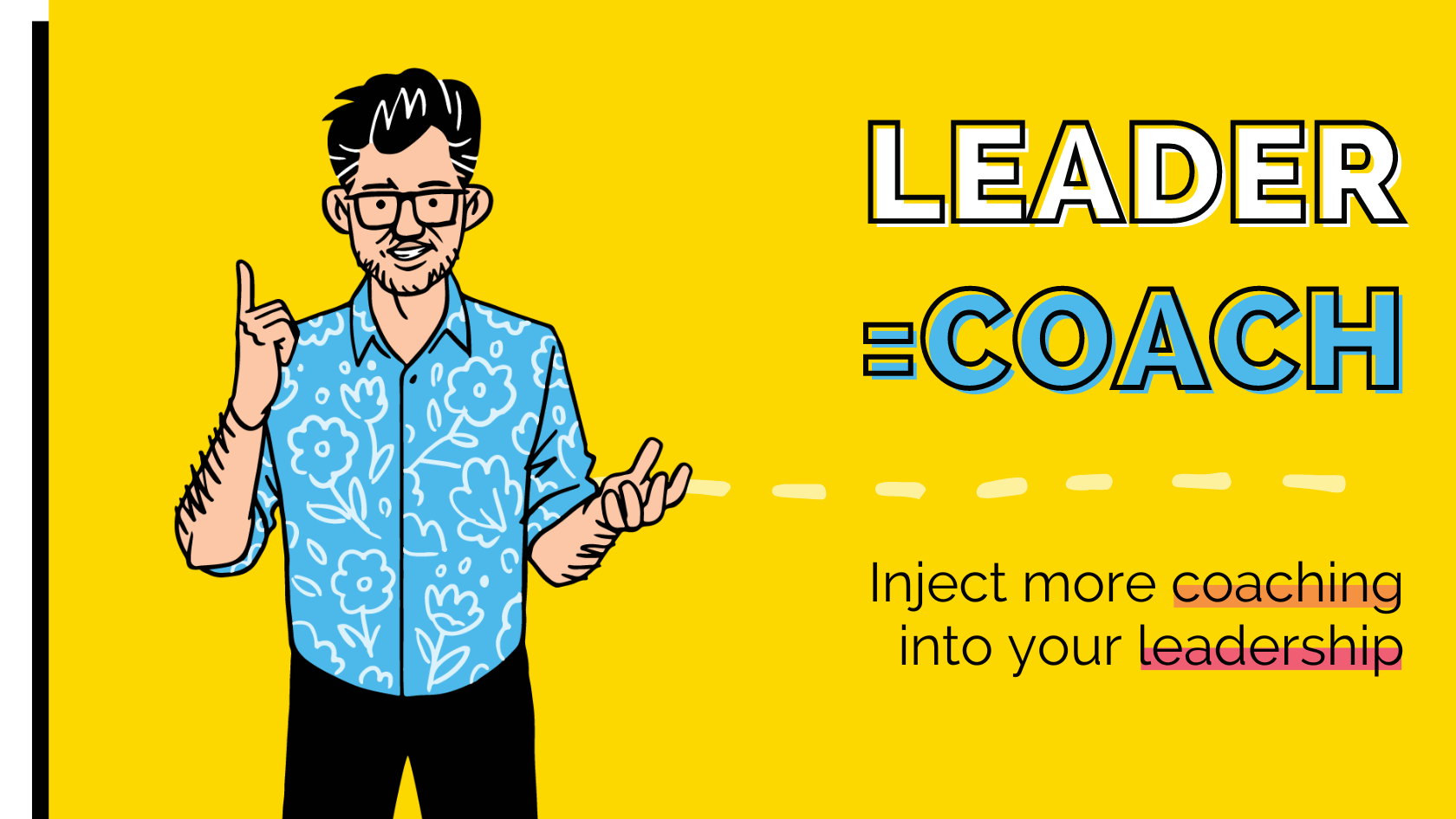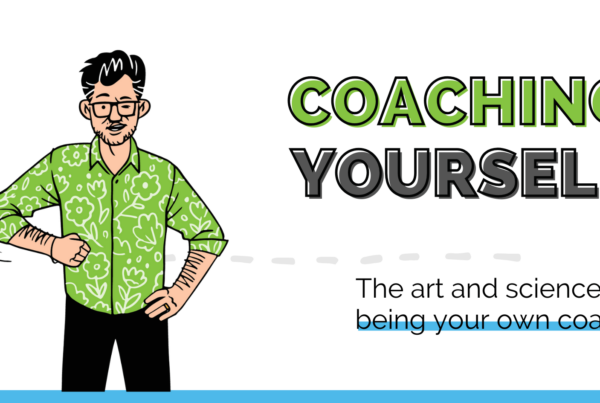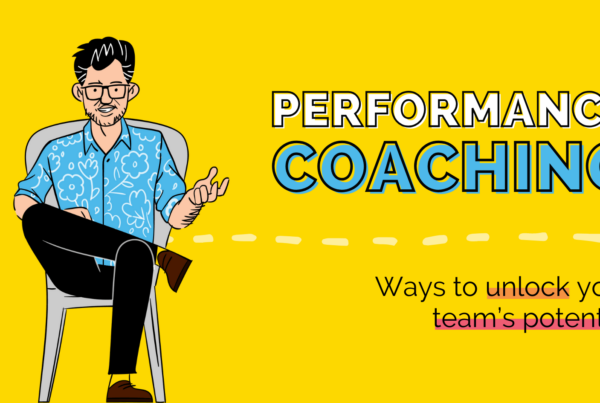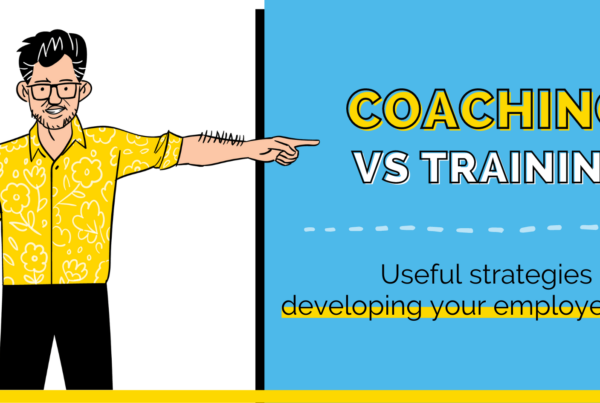
At this stage of the game, we’ve all heard of the supposed benefits of coaching in the workplace.
It’s a game changer for leaders looking to unlock the best of their team, increase motivation, provide more autonomy, align goals and values, provide feedback and recognition, etc.
Fantastic – but what does this mean practically? How does it translate into better working relationships? And how can it make you a great leader?
Just throwing buzzwords around won’t make change happen – you need a concrete plan to transform these amorphous ideas into an undeniable reality.
The trick is to become more coach-like in your daily interactions, to embrace a leader-as-coach mindset – in other words, to develop a coaching habit.
Below I’ll show you exactly what that looks like, and the tangible benefits you can expect when you put it into practice.
The Greatest Answers Come From the Greatest Questions
Become a better leader. Better teacher. Better person.
Learn how to ask the right questions the right way with this free download.
Eight Ways to Ask a Question Well
What Is a Coaching Habit?
Good coaching – no, make that GREAT coaching – plays an important role in developing strong leadership – it’s what the leader-as-coach mindset is all about. But for many busy leaders, being told they now have to “be a coach” just makes them roll their eyes.
They’re simply trying to be a good employee, a good person, and to get things done. They’re not anti-coaching. But they don’t harbor any particular desire to coach employees either.
And I’m with them. See, I’m not trying to turn you into “a coach”. There are enough of those in the life- and executive-coaching fields already.
Instead, I want to unweird coaching and help you to be more coach-like in how you lead. To make it work, you will need the following three principles from my book, The Coaching Habit:
- Be often. Make coaching a regular act by transforming the interactions you have, rather than adding more to your workload. Coaching should also be 10 minutes or less. If you can’t do that, you don’t have time for coaching.
- Be curious. We’re all wired to leap in with advice, suggestions, opinions, and solutions. Effective coaching comes down to slowing down that rush to give advice and staying curious a little longer.
- Be lazy. Stop doing all the work for them. Stop jumping in and fixing it and solving it for them.
How Adopting the Leader as Coach Mindset Benefits Your People
Embracing the coaching leadership style is something that can be done by everyone, and in a way that will have a significant impact on performance and satisfaction.
Here are just 9 of the many (many) benefits you’ll unlock when you develop your coaching skills:
1. You Get to Work Less Hard and Have More Impact
One of the biggest threats to workplace productivity and creativity is something we’re all exposed to on a near-daily basis. It’s rampant. It’s contagious. I call it The Overwhelm.
Leaders tend to aim big, to reach high. But with that ambition comes the inevitable high-achiever injury – overextension.
Coaching offers up an antidote to The Overwhelm through the simple principle of Be Lazy. I bet you twitched when you read it. You’re hardworking, go-getting and driven. Being lazy is anathema to your DNA.
But here’s what happens when your ambition leads you to be the advice giver, solution provider, and answer finder as you engage with others.
First, you create an overly dependent team, a team that comes to you at first for a few things and then eventually for everything, because you’ve trained them to do just that. This is not a motivated and engaged team; this is a codependent team.
Second, since you’re now doing the team’s work as well as your own, you feel the cold waters of The Overwhelm lapping at your feet. You’re overcommitted and stretched thin. And because you’re now focused on just trying to get it all done, you lose that sense of connection to meaningful work, or what I call your Great Work.
Asking a good coaching question is a self-management tool to stop you from leaping into action. If you’re asking, you’re not doing. In short, getting good at regularly asking powerful questions will let you work less hard and have more impact.
Curious about what a good question looks like? In my book, The Coaching Habit, I offer up my favorite seven. Here are three of them:
- What’s on your mind?
- What is the real challenge here for you?
- What do you want?
2. You Build Relationships That Are Safe, Vital, and Repairable
If there’s one thing that’s true about the workplace, it’s that your happiness and success are dependent on the quality of your working relationships. And yet, most of us — even brilliant leaders — leave these relationships to chance. We cross our fingers, hope that our relationships will be shiny and bright and powerful and energizing, and let the gods dictate the rest.
When you embrace being more coach-like, you unlock the opportunity to actively manage the health of your workplace relationships. I call this building relationships that are safe, vital, and repairable.
As I outline in my new book, How To Work With (Almost) Anyone, safety refers to Amy Edmondson’s concept of psychological safety. It’s about creating an environment where people are willing to say stuff that might feel a bit risky and show up in a way that is a more fulsome representation of who they are.
Vital has two meanings – essential and full of life. To me, a vital relationship pushes me, challenges me, has a sense of fun and adventure, and makes me step out to the edge of what I know, who I am, and what I can do.
Lastly, there’s repairability. Generally speaking, we’re not that good at repairing broken relationships. Often something gets dented or cracked or banged into torn, and we throw off our hands a little bit and go: “Ah, see, this just proves that!”
With repairability, we’re committing to fixing stuff when it goes wrong, bouncing back from failure, learning from our mistakes, and building a stronger relationship for it.
3. You Unleash Employee Motivation
Despite what you might think, it’s not fancy cars or lavish holidays that motivate people. As Dan Pink laid out beautifully in his book, Drive, what people crave is autonomy, mastery, and purpose.
There’s no faster and cleaner intervention than curiosity – the essence of being more coach-like – to help your people move closer to these three.
A great question drives autonomy (they answer it, not you), mastery (questions create aha! moments; advice does not), and, to a lesser extent, purpose (if the question helps make the connection to the why of it).
Put simply, if you want those you lead to be more engaged and motivated, leaning into coaching will do it.
4. You Communicate Better
When you shift from giving advice and offering solutions to asking questions, you might at first feel a little anxious. You might wonder, “How can I be helpful if I’m just pestering them with questions?” But if you think about it, asking questions is a wonderful way to communicate better.
When you listen and think before speaking, become more mindful of what you say, and communicate with kindness and awareness, you are more engaged and present.
On top of that, when you tell less and ask more, you receive valuable answers that offer insight into the situation at hand. The answers will also reassure you that you’re being helpful, even if you don’t feel like you are doing much by simply asking questions.
We’re used to a work culture that rewards advice through praise and promotion. Giving advice presents the illusion that you’re adding value to a conversation and holding control of the interaction.
Asking questions instead means relinquishing some of that power. While it might feel a little uncomfortable, this shift in the communication dynamic almost always results in a more positive, more meaningful, and more useful exchange.
5. You Learn to Trust Your Team
Another delightful thing happens when you start leaning into curiosity instead of defaulting to advice giving – your people become more self-sufficient and capable.
By slowing down the rush to solve the issue, you’re helping the other person figure out their solution. Now, your cognitive bias might tell you their answer is not as good as your brilliant answer, but there’s a fair chance that they’re going to come up with a half-decent answer quite often.
As this happens again and again over time, workplace trust starts to flourish. Your people will learn to trust themselves to find solutions without needing your help, and you’ll learn to trust your people for their unique strengths, skills, and talents. In that sense, coaching is foundational to building a high-performing, effective team.
6. You Can Spot the Real Problem Worth Solving
Another thing to remember about slowing down the rush to give advice is this: your advice is probably not as good as you think it is.
We tend to easily offer up answers when someone comes to us with a problem, but often our initial solution is so quick and simple that it may not work. And it’s possible that in our rush to give advice, we’re not even addressing the real problem.
Often when someone comes to us for help, the real issue that needs solving is not the one they’ve brought up. By asking a few coaching questions, you’ll get to the heart of the matter at hand and spend your time solving the right problem, instead of rushing off to fix the wrong issue.
7. You Create an Engaged Workplace Culture
In Helping: How to Offer, Give, and Receive Help, Edgar Schein shared a profound insight.
When you offer to help someone, you “one up” yourself, and you “one down” them. And neuroscience tells us that when you lower someone’s rank, someone’s status, you create resistance and disengagement.
And you know this is true because you’ve experienced it on both sides of the equation.
When people have thrust their well-meaning help upon you, you’ve shut down and deflected it. And when you’ve done your best to offer assistance, strangely, weirdly, it’s often been cast aside.
Coaching is a wonderful way to “one up” the person you’re speaking with. By asking a question, you show the other person that you’re interested in what they have to say, that you can learn from them, and that they’re valued – and it’s that kind of mindset that creates a workplace culture where people want to work.
8. You Make More Room for Great Work
Almost 15 years ago, my book Do More Great Work came out. In the book, I split the concept of work into three definitions:
- Bad Work. Mind-numbing, soul-sucking work. The work where you realize that this is how you’re spending your one and precious life.
- Good Work. Your job description: productive, efficient, important… and the work that can keep you stuck in a cycle of busyness and efficiency.
- Great Work. Work that has more impact, and work that has more meaning. It combines making a difference and lighting you up. Thrilling. Scary. It’s often at the edge of who you are.
To be happy, we need the right mix of Good Work and Great Work. And yet, many leaders spend far too much time on Bad Work, a little on Good Work, and almost none on Great Work.
Embracing the leader as a coach mindset allows you to flip the switch. As your team becomes more self-sufficient, creative, and confident, they’ll need you less. That means less Bad Work and even less Good Work.
The result? A chance to uncover what Great Work means to you, your team, and your company — and steer the helm in that direction.
9. You Empower Your Team to Learn, Grow, and Achieve
A huge aspect of effective leadership is giving your employees the opportunity to share and create. It’s about relinquishing power at the right moments.
As you’ll know by now, asking questions is the easiest way to give up a little of your power to instill a little more in your employees, and something beautiful happens when you do.
See, when you give your people the opportunity to think bigger and come up with their ideas, you empower them to test the length of their responsibility, maximize their potential, and come up with more — more wisdom, more options, more solutions.
Ultimately, you will encourage development, help create moments of insight and learning, and have more impact as a team.
Change the Way You Lead Forever
If you fall into the habit of asking questions, you’ll become more coach-like, which will change — for the better — the way you lead.
Changing your habits step by step will help you create a coaching habit. That process will look something like this:
Ask a question… instead of offering advice.
Wait for the response quietly… instead of asking another question.
Then ask another question. Stay curious and think about your answers instead of automatically saying yes to a request.
Then ask another question.
You’ll find that the more questions you ask, the more options you’ll receive, and the more empowered your employees will become.
By creating a coaching habit, you will become more coach-like and ultimately a better leader, which means that you will have successfully fulfilled your resolution, while also having more impact at work.
Want a little more support in building a coaching habit? Then my book, The Coaching Habit, is for you.




